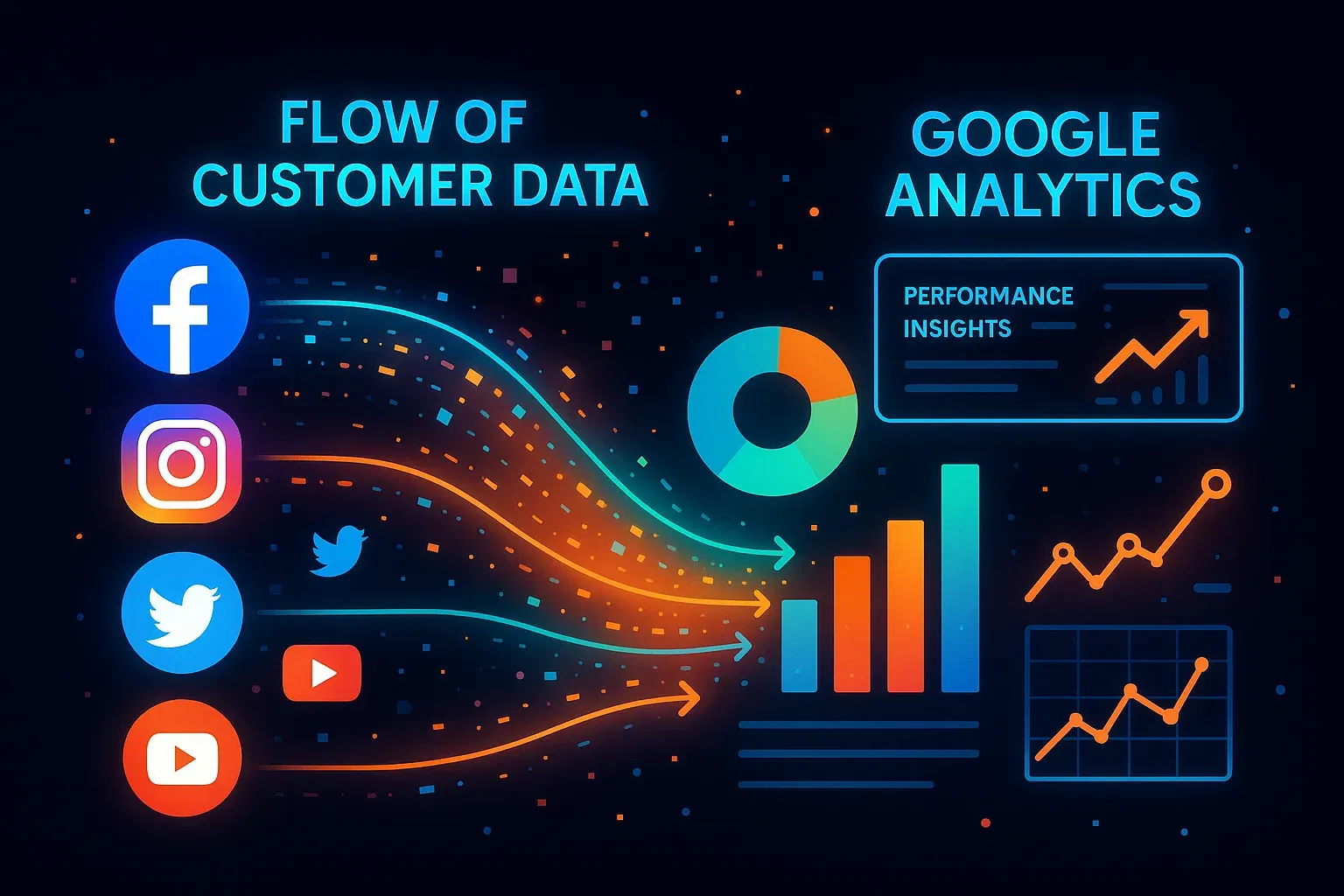Google Analytics + Social Media: The Integration Guide You've Been Waiting For
📊 Track more than likes. Track what happens after the click.
Social media tells you what happens on-platform — likes, comments, reach.
But what happens after someone clicks your link? Where do they go? What do they do? And how does it tie into your goals?
The answer is simple: Google Analytics. And this guide shows you how to finally connect it properly to your social media strategy.
1. Why integration matters
Without Google Analytics, you're only seeing half the story.
With it, you get:
A full view of the customer journey
Post-click behavior tracking
ROI calculations for each campaign
Insights to fine-tune future strategy
💡 Social media tells you who clicked, but Analytics tells you what they did next.
2. How to connect Google Analytics to your social media
✅ Step 1: Create UTM parameters
– Use a tool like Campaign URL Builder
– Label: source (e.g. facebook), medium (e.g. social), campaign name (e.g. march2025_offer)
✅ Step 2: Add UTM links to your posts
– Especially to all key CTA links
✅ Step 3: Monitor performance in Google Analytics
– In GA4: Go to “Traffic acquisition” → “Session source / medium”
– See which channels, campaigns, and formats drive the most conversions

3. What you’ll learn through this integration
Which post led to the most sales
Which channel has the highest bounce rate
How long social visitors stay on your site
Which content format (video, blog, carousel) generates the most micro-conversions
🎯 All this helps you plan better content moving forward.
4. Common mistakes to avoid
🚫 No UTM tagging — you’ll never know where traffic came from
🚫 Inconsistent campaign naming — leads to messy, untrustworthy data
🚫 Ignoring mobile vs. desktop behavior — key differences impact interpretation
💡 Solution? Create a standard naming structure and include UTM tracking in your content workflow.
✅ Takeaway: Smarter tracking = stronger strategy
Integrating Google Analytics with social media is one of the easiest ways to boost results without increasing your ad spend.
Track what happens after the click — and start making decisions that actually matter.